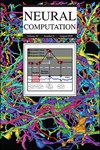利用神经连接约束赢得彩票:利用空间约束稀疏RNN在认知任务中更快地学习。
IF 2.7
4区 计算机科学
Q3 COMPUTER SCIENCE, ARTIFICIAL INTELLIGENCE
引用次数: 2
摘要
递归神经网络(RNN)通常用于对大脑中的电路进行建模,可以解决各种需要记忆、纠错或选择的计算难题(Hopfield,1982;Maas等人,2002年;Maas,2011年)。然而,完全连接的RNN在结构上与极为稀疏(约0.1%)的生物对应物形成对比。受新皮质的启发,神经连接受到沿皮质片的物理距离和其他突触布线成本的限制,我们引入了局部掩蔽RNN(LM RNN),它使用稀疏度低至4%的任务不可知的预定图。我们在与认知系统神经科学相关的多任务学习环境中研究LM RNN,使用一组常用的任务,即20个Cog任务(Yang et al.,2019)。我们通过荒谬的还原表明,20个Cog任务可以通过我们可以机械地分析和理解的一小部分分离的自闭症来解决。因此,这些任务没有达到在RNN中引入复杂的递归动力学和模块化结构的目标。接下来,我们贡献了一个新的认知多任务组Mod Cog,它由多达132个任务组成,任务数量和任务复杂性是20个Cog任务的7倍。重要的是,虽然自闭症可以解决简单的20个Cog任务,但扩展的任务集需要更丰富的神经结构和连续的吸引子动力学。在这些任务中,我们表明,与完全连接的网络相比,具有最佳稀疏性的LM RNN可以获得更快的训练和更好的数据效率。本文章由计算机程序翻译,如有差异,请以英文原文为准。
Winning the Lottery With Neural Connectivity Constraints: Faster Learning Across Cognitive Tasks With Spatially Constrained Sparse RNNs
Recurrent neural networks (RNNs) are often used to model circuits in the brain and can solve a variety of difficult computational problems requiring memory, error correction, or selection (Hopfield, 1982; Maass et al., 2002; Maass, 2011). However, fully connected RNNs contrast structurally with their biological counterparts, which are extremely sparse (about 0.1%). Motivated by the neocortex, where neural connectivity is constrained by physical distance along cortical sheets and other synaptic wiring costs, we introduce locality masked RNNs (LM-RNNs) that use task-agnostic predetermined graphs with sparsity as low as 4%. We study LM-RNNs in a multitask learning setting relevant to cognitive systems neuroscience with a commonly used set of tasks, 20-Cog-tasks (Yang et al., 2019). We show through reductio ad absurdum that 20-Cog-tasks can be solved by a small pool of separated autapses that we can mechanistically analyze and understand. Thus, these tasks fall short of the goal of inducing complex recurrent dynamics and modular structure in RNNs. We next contribute a new cognitive multitask battery, Mod-Cog, consisting of up to 132 tasks that expands by about seven-fold the number of tasks and task complexity of 20-Cog-tasks. Importantly, while autapses can solve the simple 20-Cog-tasks, the expanded task set requires richer neural architectures and continuous attractor dynamics. On these tasks, we show that LM-RNNs with an optimal sparsity result in faster training and better data efficiency than fully connected networks.
求助全文
通过发布文献求助,成功后即可免费获取论文全文。
去求助
来源期刊

Neural Computation
工程技术-计算机:人工智能
CiteScore
6.30
自引率
3.40%
发文量
83
审稿时长
3.0 months
期刊介绍:
Neural Computation is uniquely positioned at the crossroads between neuroscience and TMCS and welcomes the submission of original papers from all areas of TMCS, including: Advanced experimental design; Analysis of chemical sensor data; Connectomic reconstructions; Analysis of multielectrode and optical recordings; Genetic data for cell identity; Analysis of behavioral data; Multiscale models; Analysis of molecular mechanisms; Neuroinformatics; Analysis of brain imaging data; Neuromorphic engineering; Principles of neural coding, computation, circuit dynamics, and plasticity; Theories of brain function.
 求助内容:
求助内容: 应助结果提醒方式:
应助结果提醒方式:


